Features of the quilting technique
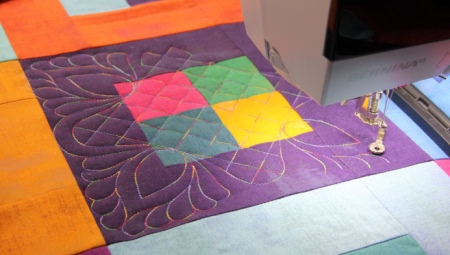
Quilting, a variety of needlework, is gaining more and more popularity among craftswomen every year. One of its main advantages is the ability to combine patchwork, embroidery, applique, and stitch in one product.
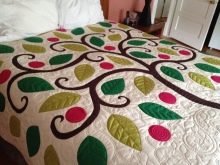
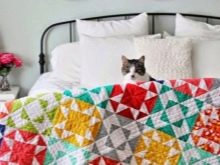
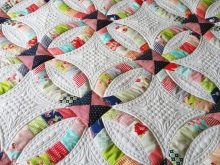
What it is?
Quilting is special patchwork technique that allows you to create quilted productsthat have two or more layers. In addition to traditional stitches and stitches, appliques and embroidery can also be used for embellishment.
The work resulting from this handicraft is called quilts, and the people doing it are called quilters.
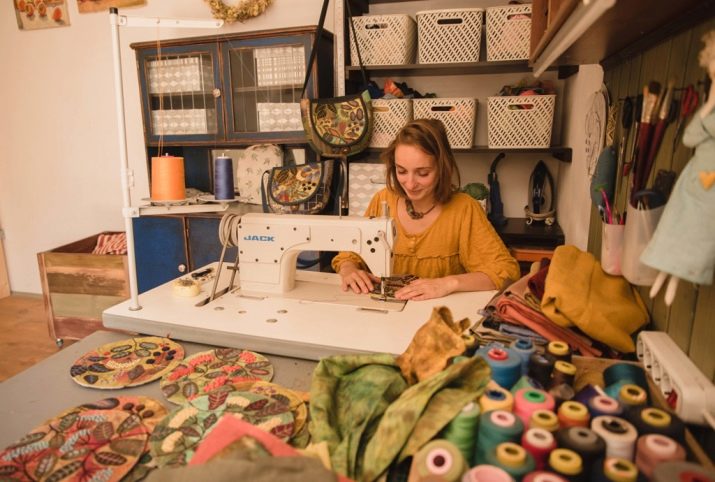
The fabric, as a rule, is created from the front and back coverings, between which there is a padding polyester filler that creates volume. The front layer, which is also decorative, is made using the patchwork technique, decorated with appliqués and embroidery. The wrong side can be formed from residual materials, or it can be a solid canvas. All layers are necessarily quilted.
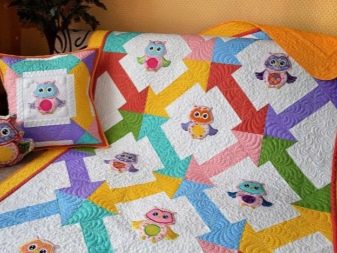

How is it different from patchwork?
Despite the fact that patchwork and quilting are often considered the same handicraft technique, there is still a difference between them, and even in historical background. To begin with, patchwork, also known as patchwork sewing, has a narrower focus and has its own techniques and techniques. When making a product in the quilting style, it is not forbidden to combine several sewing techniques, that is, it is more versatile.

The essence of patchwork is that a sufficient number of pieces of fabric are sewn into a single piece. Quilting, on the other hand, is always responsible for the creation of quilted products that have two or more layers, and the decorative front part can just be patchwork..
The result of a patchwork is often devoid of volume, but quilting objects always have it due to their own layering.
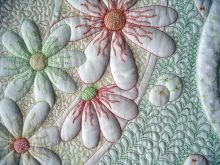
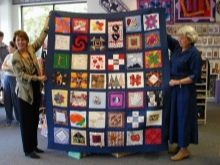
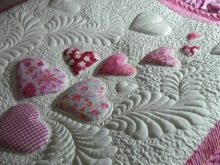
Overview of stitch types
Quilting can be done using hand, machine or combination stitch. Machine stitch, in turn, can be carried out on specialized machines or on household sewing devices, both in normal and free motion. For beginners, it is recommended to use the machine stitch at normal motion, since this method does not even require any additional configuration. In this case, the quilter chooses between a seam stitch, or split stitch, and straight or slightly wavy lines that can run parallel or slightly intersect. It is also possible to implement the stitch according to the pattern, that is, according to the lines already drawn on the fabric.
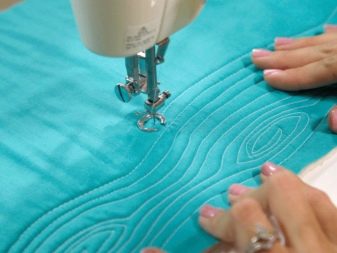
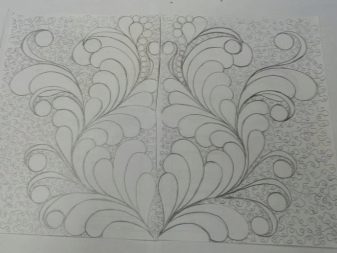
Enough often craftsmen refer to the classic free stitch art machine... It is carried out without first drawing lines on the fabric and looks like a series of repeating elements of any complexity, from geometric shapes to exquisite botanical compositions. The main types of quilting stitches are straight and wavy seams, zigzag and free-running seams.... The latter is also often called tortuous.
Novice craftswomen are advised to first draw a stitch on paper, then fix the sheet on the fabric and stitch the product with a sewing machine directly on it.
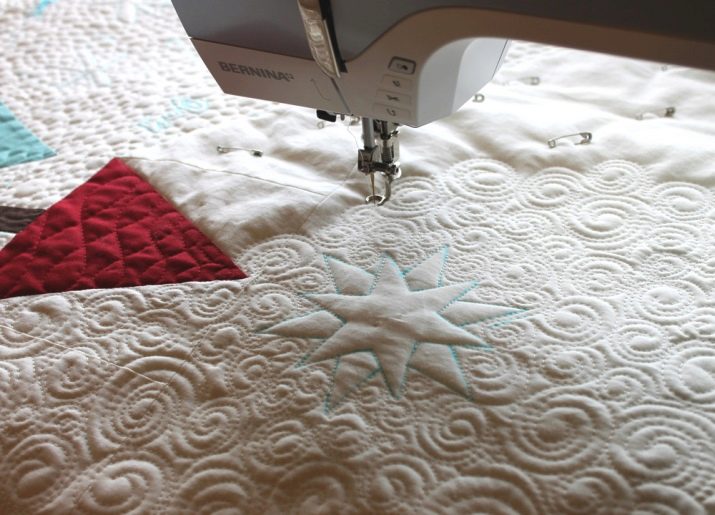
It should be added that many types of stitches are additionally classified according to density. Microstitch requires a line spacing of 1-2 millimeters... This view is used to fill in a small space inside the main drawing. With a tight stitch, a gap between the lines is maintained from 2 to 10 millimeters. The variety is more often used to create postcards, napkins and panels.
The most popular density is from 3 to 5 millimeters.
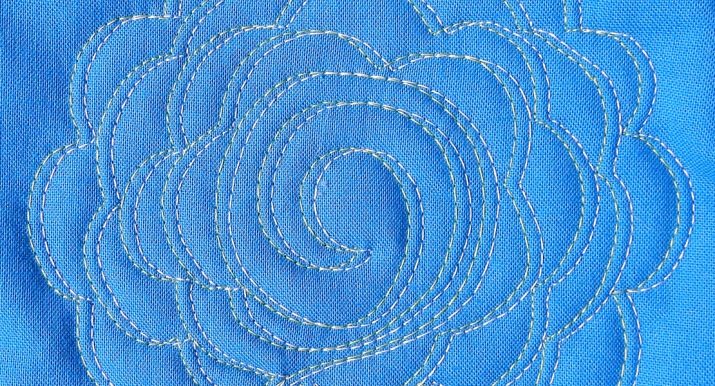
If the spacing between the lines is 10 to 20 millimeters, then we are talking about a medium density stitch. This variety is suitable for making bedspreads, panels and similar textiles. For sparse stitches, the distance between the lines is more than 20 millimeters..
The sparse stitch is most often used for blankets, as it allows them to remain soft and moderately voluminous.
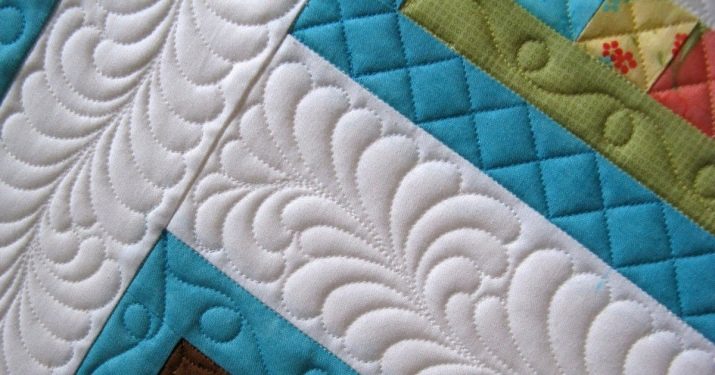
Separately considered Japanese hand stitch called sashiko... This technique is based on the use of geometric shapes and straight lines. Straight stitches must follow the previously applied markings.
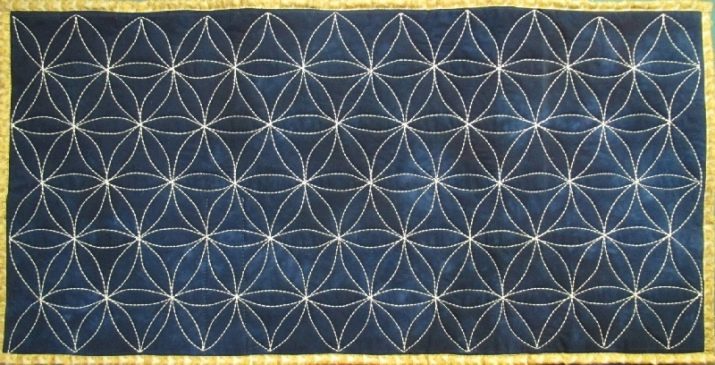
Differences in quilting in different countries
Since quilting at one time developed in many countries, today it is customary to single out several of its "national" varieties. Japanese quilting is characterized by a combination of sashiko stitches, appliques, hand-painted and patchwork.... Products are always created by hand, taking into account the developed palettes. For example, the Abyss of the Sea storyline requires the use of gray, white, taupe, and indigo.
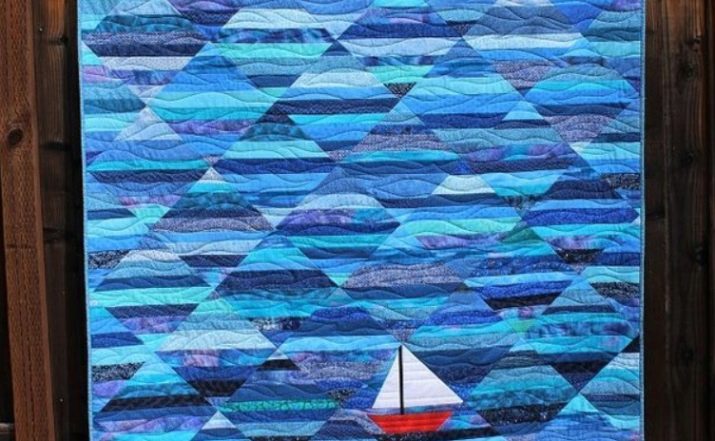
American quilting doesn't look so luxurious, like Japanese, but it can be realized both manually and on a sewing machine. Its peculiarity is the choice of bright colors and the creation of geometric patterns.
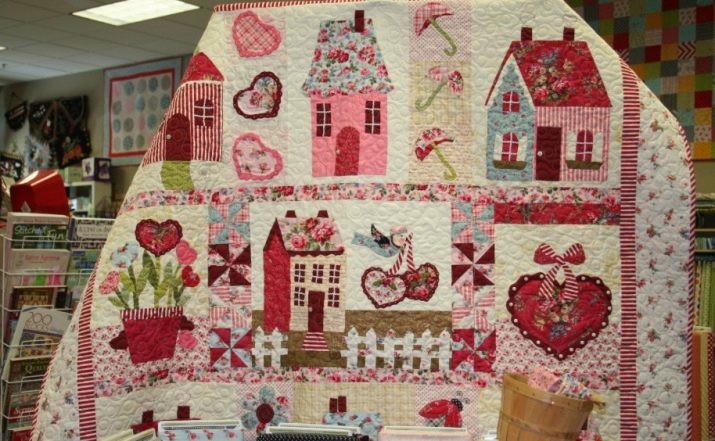
On products made in the technique of Celtic quilting, it is easy to find national patterns and ornaments.
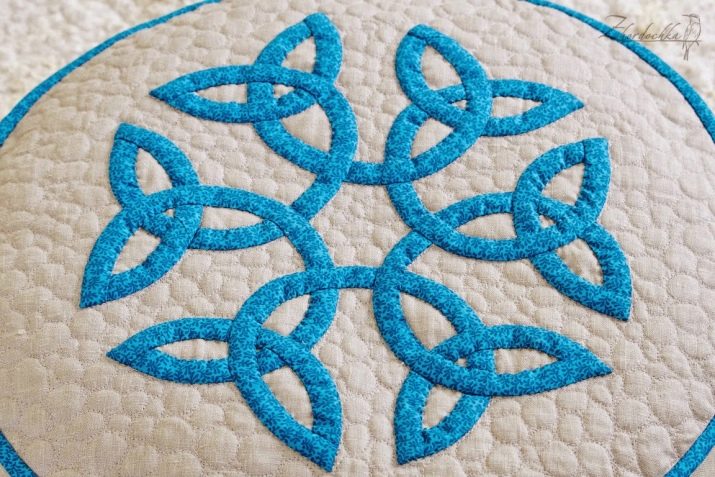
Hawaiian quilting requires decoration of works with appliqués with natural motifs, floral ornaments and figures of birds and animals... It is customary to cut out decorative elements, taking into account the radial symmetry.
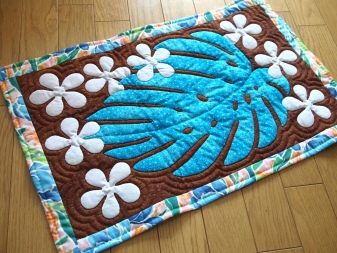
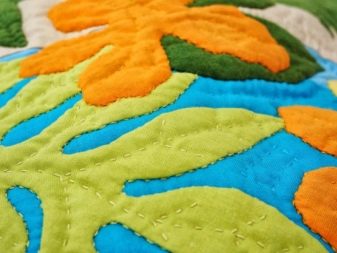
Required tools and materials
The main quilting tools are a needle and thread, but in addition to them, a novice master should prepare several more useful units. To cut the fabric, you will need either high-quality tailor's scissors that do not “chew” the fabric, or a professional roller knife. The latter, by the way, should be purchased complete with a special rubber mat, the surface of which is covered with linear markings. A clear wide ruler, ripper and pins are also desirable for quilting. In addition to matching threads, you will also need to prepare threads of a contrasting shade.
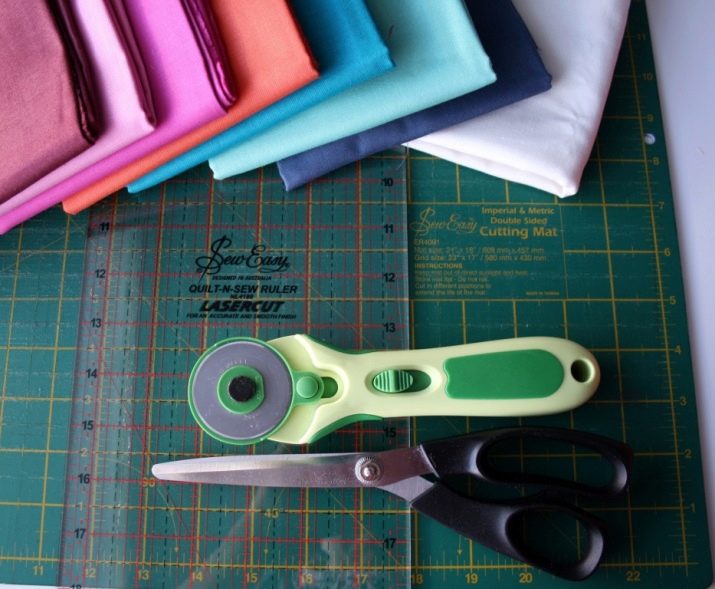
Naturally, work requires a thin filler, a variety of fabrics, an iron and a sewing machine. The device for direct quilting can be domestic or specially adapted for patchwork sewing. Special crayons, a pencil or a bar of soap will greatly simplify the marking process. If the work is planned to be carried out using templates, then cardboard is required for them.
As for the fabric, it is better to choose a material of the same density and harmonious shades. It is recommended to dilute the patches with pictures with monochromatic fragments.
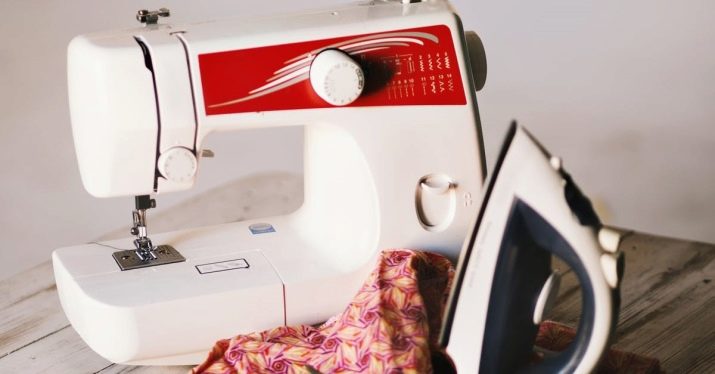
As a filler, it is advised to use a thin synthetic winterizer, which is easily quilted even by hand, but does not create excessive weight and volume. If the decorative canvas will not be used often, and therefore will be washed weekly, then silk, brocade, chiffon and even lace patches can be easily adapted to create it. The seamy side can be made from a special lining fabric or that cotton fabric that is easy to iron and wash.
Both monochromatic and patterned lining will look good. It's great if it can contrast with the front side or match one of the shades used.
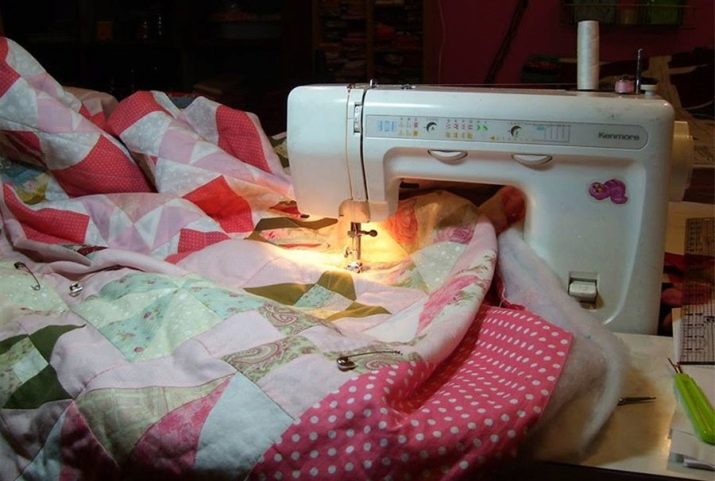
Master class for beginners
Before you start to implement any quilting master class step by step, you need to decide on the appearance of the planned product. It will be more convenient to learn how to quil on some simple textile product, for example, a kitchen potholder or a chair mat.... In this case, even a circuit will not be needed for work, and square or triangular patches of the correct shape will be used as a basis. The fabric should be combined in accordance with colors, densities and textures. The pattern can be made by yourself. The number and dimensions of the constituent parts are determined depending on the size of the item being made.
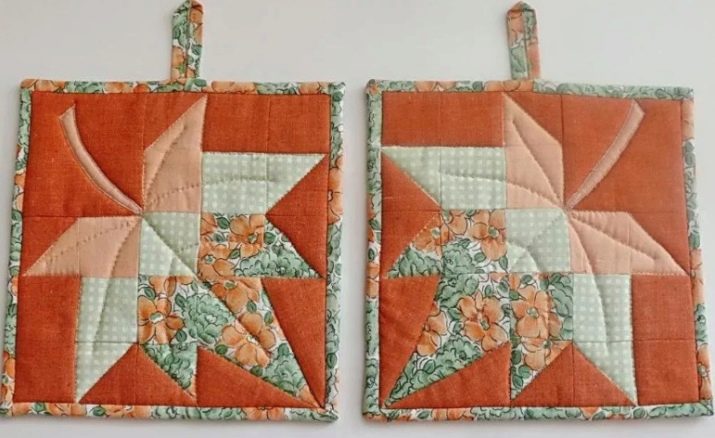
Based on the calculations, cardboard patterns are cut out. When transferring it to the fabric, we must not forget about the allowances, ranging from 0.5 to 0.7 centimeters and located on each side. Having cut out the parts from the fabric, they must be connected. When the work is carried out manually, it is convenient to iron all allowances inward, and then sew the parts along the fold line. Having finished with the decorative coating, you need to connect it to the back of the fabric and sew with the selected stitch. The edge of the product will be beautifully processed with a patterned edging.
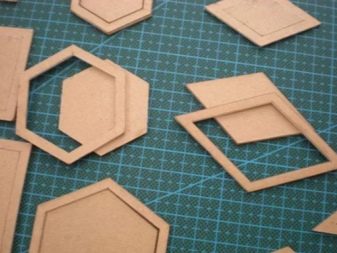
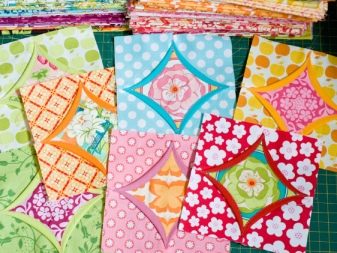
In the event that all the work is carried out on a sewing machine, it will be necessary to select a special sharp needle. Normally, a 70th needle is used for size 30-40 cotton threads., and metallized threads are usually used with embroidery needles.
Before starting work on a product, it is better to “test” the device on an unnecessary piece of fabric.
The layers should be fixed between themselves using pins or soluble threads. The stitch should only be sewn from the patchwork side.
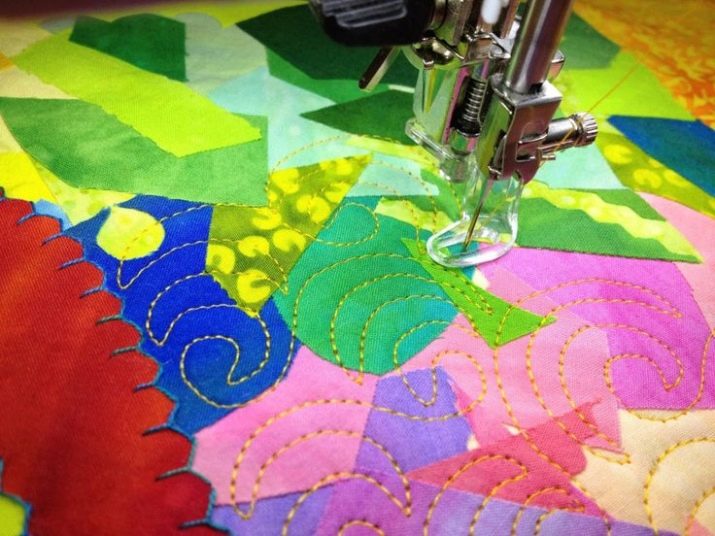
When starting quilting, the easiest way to start is by sewing with squares, where simple geometric shapes are connected together.
The "log house" and "hourglass" schemes imply the use of strips of different lengths from which these elements are composed. To create a "carousel" or "English park" you will need to cut out triangles of different shades, which are then grouped in a certain way. The Ohio Star is also created from triangles that combine to form small square blocks. Popular schemes also include the "card trick", "the riddle of Solomon", the Virginia whirlwind "and the" Russian square ".
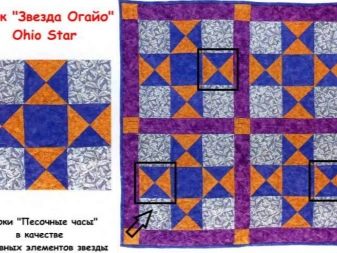
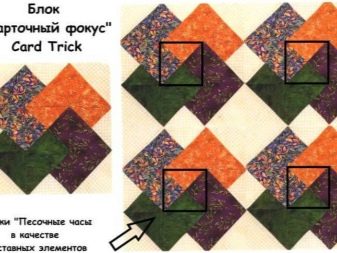
Examples of products
The most beautiful quilting products are obtained with a harmonious combination of colors. For example, quilted potholders in white-pink-blue tones look beautiful and elegant. Made up of 9 square patches, the potholder harmoniously combines two types of patterns: white polka dots on a pale pink background and chamomile on a sky blue background. The product is equipped with a comfortable eyelet and decorated with a laconic button.
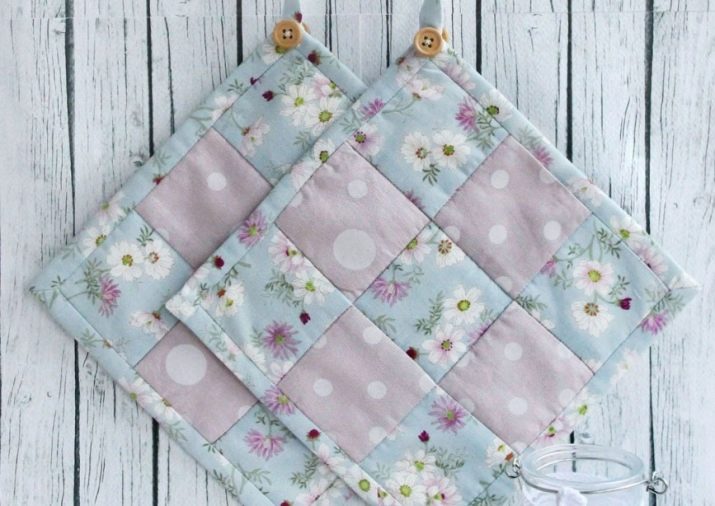
Quilting is quite typical of a blanket - its middle part is made up of paired triangles, and a contour of stripes is formed around them. The use of different colors and patterns gives the product a cozy rustic look... Despite the abundance of colors, they are combined quite harmoniously.
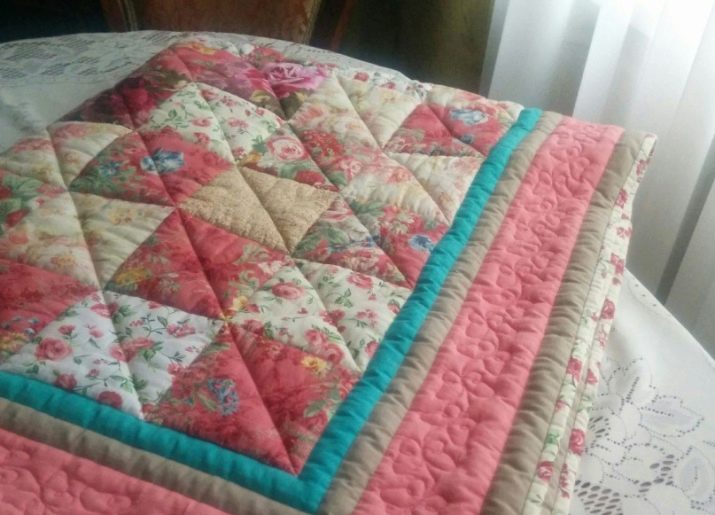
Shabby, he is torn quilting is characterized by stitching the blocks with seams outward, which are then additionally tousled... Regular squares are most often used as blocks. For example, this technique is used to create a pillowcase for a decorative pillow. Both the patches and appliqués are made in similar colors, but decorated with completely different patterns, which creates a balanced but original looking picture.
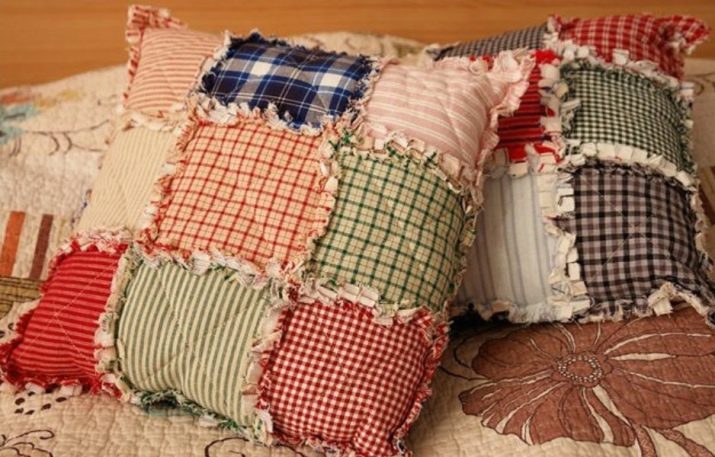
The following video shows an example of how to create products using the Crazy Quilt technique.


